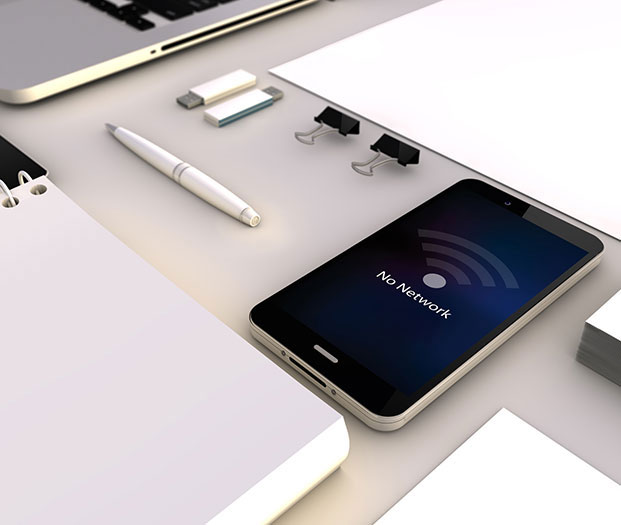Weak Wireless Signal? Reduce Interference

Aug
13
13
When it comes to your company’s wireless network, you want speed, consistency and reliability. But sometimes you may find a weak wireless signal in certain areas of your office. To get a Wi-Fi system that keeps you reliably connected, look for and plan around possible sources of wireless interference.
Wireless Signal Strength
Ever wonder why your wireless signal strength is greater in one area of a room versus another? Although wireless data is digital, the signal uses analogue radio waves, which are subject to interference. This interference can cause a decrease in wireless range, loss of connection and/or a decrease in how much data gets through the system (slow uploads, etc). Radio waves only travel in straight lines, so line-of-sight is very important to wireless signal strength. When you are dealing with indoor wireless issues, you must consider furniture, walls and even other electronic devices, such as microwaves. All of these can impact the path of the signal as well as its strength.Wireless Interference
Things like wood and glass don’t generally provide much of a signal obstruction, but concrete, plaster and metal can create high levels of interference. For example, because load-bearing walls are often made of concrete or brick, it may be more difficult for a wireless signal to pass through them. When a signal has to penetrate a thick wall, the signal will be degraded and weaker on the other side. Similarly, foil-backed insulation, which contains metal, can affect the signal, as well as moisture/dampness, which can absorb radio waves. People can also impact the performance of wireless signals, as the human body is 45 to 75 percent water. Basically, anything that can potentially affect a regular radio signal can also affect your wireless signal.Proper Design and Installation
A good wireless network design partner will design with obstacles in mind and select an optimal location for the wireless device. They will likely map all load-bearing walls, and if there is such a wall in a difficult location, they will try and position the wireless device in a way that creates minimal interference. An installer should also consider whether wireless signals will bounce off of objects (reflections) or travel along several paths to arrive at the receiving antenna at varying times (multipath propagation), as these can also cause interference. Being aware of and preventing wireless interference can make a big difference in signal strength. Discuss location and position with your network design partner so you can get the most reliable wireless signal possible.Share




